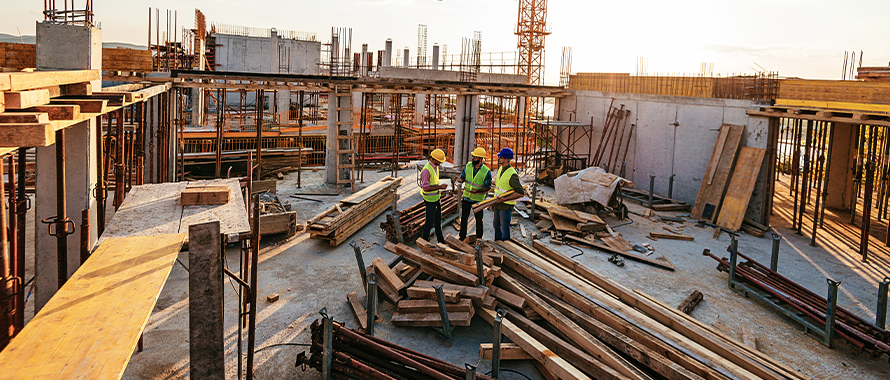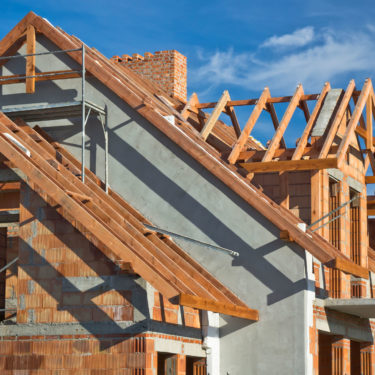COVID-19’s impact on the Canadian construction industry has been substantial; to learn more about current challenges facing construction companies and how Construction Insurance can help address them, we spoke with Steven Hrab, Director, Construction, Burns & Wilcox, Toronto, Ontario.
What are the greatest risks facing companies in Canada’s construction industry?
S.H.: Global lockdowns are currently the greatest challenge facing the industry in Canada. The resulting backlog of materials has created shortages on construction sites and caused unforeseen and unprecedented work stoppages for which lenders, insurance companies and individuals were unprepared. There are also delays in obtaining permits; as a result, many projects that would otherwise have begun are stuck in limbo until appropriate paperwork is secured. In addition, lack of availability and slow progress of contractors have led to risks associated with construction professionals taking on projects that involve work that may be outside the scope of their experience or specialization.
What should companies be aware of relative to these risks?
S.H.: Build sites have been sitting idle due to lockdowns in Canada; this increases exposures for owners, lenders and insurance companies. The best way to address these exposures is to bring a licensed and experienced general contractor onto a project to guide the process of adding sub-trades where needed and advise companies and individuals against taking on project work for which they are not qualified. Conversations need to take place between insurance companies, brokers and project stakeholders so they are aware that when there is inactivity on a build site the insurance policy might need to be set up differently. These conversations should include all potential hypotheticals and reviews of what coverage options exist in relation to delays, shutdowns or temporary pauses.
Most Construction Insurance policies contain clauses regarding how long a build can remain unattended. For most small market businesses, this period is 30 days. If a work stoppage extends past 30 days, losses could potentially be denied. Warranties are in place to ensure that all agreed-upon measures to protect an idle job site, such as fencing, security cameras and securing equipment are implemented; if such measures are not implemented fully or appropriately, coverage may be voided. Such terms are non-negotiable and exist in every Builder’s Risk policy available.
What kinds of insurance policies can help construction companies respond to current threats?
S.H.: Commercial General Liability (CGL) Insurance can help with coverage for all parties for expenses related to any type of liability exposure. A basic CGL policy can cover someone entering the construction site and having a slip-and-fall accident, while a broader CGL policy could also include coverage for expenses related to the completed operation, which is almost like a warranty on the project after the fact. As an added protection, wrap-up liability insurance can provide coverage through a designated point in time after construction is completed, often anywhere from 12 to 36 months. Commercial Property Insurance is essentially coverage to help with expenses related to issues connected with the build and the materials used; it helps mitigate potential risks facing owners and lenders.
I recommend brokers maintain an open, ongoing dialogue with clients and also remain in close contact with their MGAs. For example, as we enter a third lockdown in parts of Canada, forced work stoppage or delays in project startup could occur. Coverage is available to help address these risks. Brokers should avail themselves of their MGAs’ expertise to help design coverage solutions that offer their clients suitable protection in the midst of complex situations. This dialogue, in turn, helps inform brokers’ conversations with their clients on available coverage options to meet their individual needs.
Can you provide an example of a scenario you’ve dealt with that would illustrate the risks we have discussed?
S.H.: Ten months ago, the Ontario government stopped construction projects unless they were completed at a certain point. This impacted most Construction Insurance policies with a 30-day inactivity clause attached to them. As part of our commitment to our broker partners and their clients, Burns & Wilcox negotiated a timeframe extension, arming brokers with what they needed to help their clients address their particular risks.
What advice would you give brokers to increase their success with Construction Insurance?
S.H.: Knowledge is definitely power. Brokers who are comfortable talking about the types of risks in construction will have much greater success—this is why it is important to have good relationships with underwriters. If just entering this space, I would suggest starting small to gain experience and a positive reputation. A long-term relationship with an insured could yield success for years to come, which also translates into many cross-sell opportunities.
Construction Insurance
WHY YOUR CLIENTS MIGHT NEED IT: Construction work is inherently dangerous; a December 2020 report by CBC showed that worker fatalities on Ontario construction sites have remained steadily high since 2014, while the numbers of critical workplace injuries and safety complaints have risen.
PROTECTS AGAINST: Costs relating to a range of legal, property and injury-related exposures, including those resulting from negligence or error: work stoppage, property damage and more.
EXPERT OPINION: “A basic CGL policy can cover someone entering the construction site and having a slip-and-fall accident, while a broader CGL policy could also include coverage for expenses related to the completed operation—almost like a warranty on the project after the fact,” said Steven Hrab, Director, Construction, Burns & Wilcox, Toronto, Ontario.






